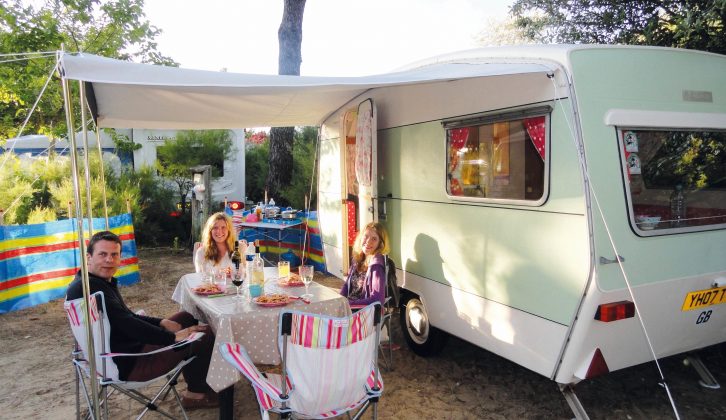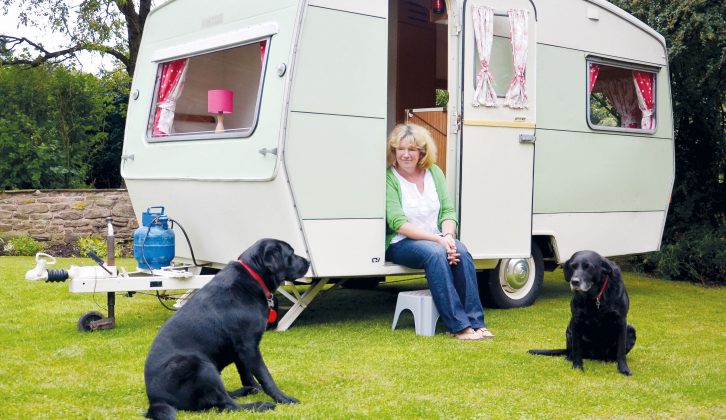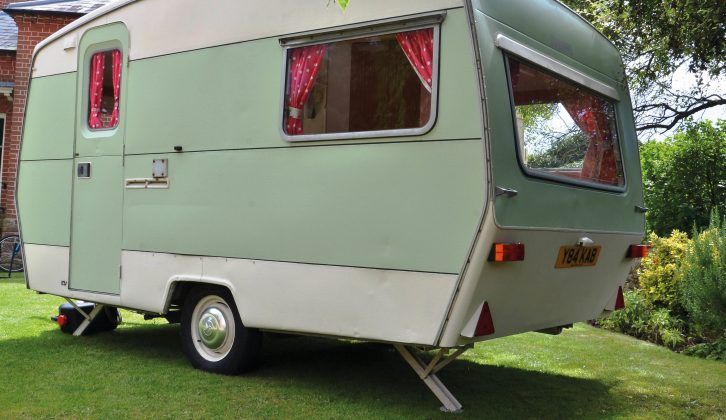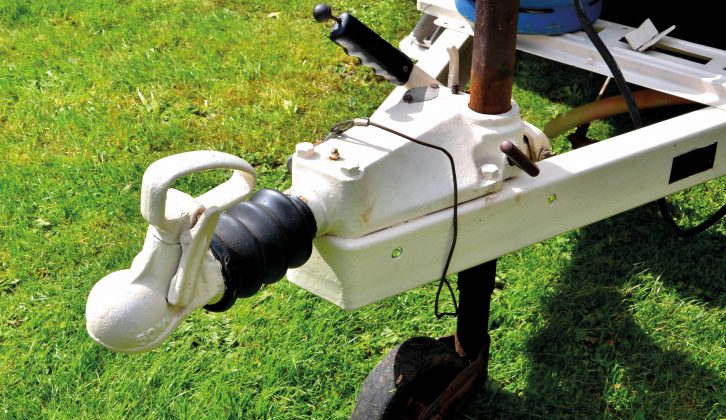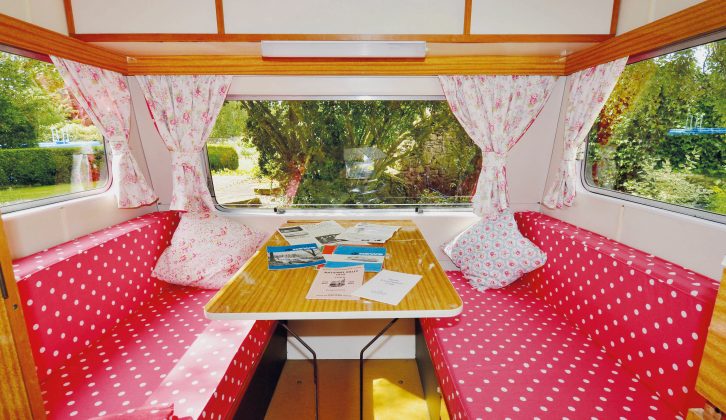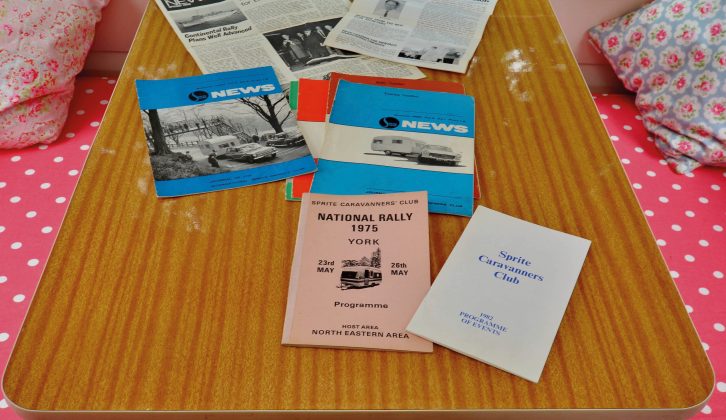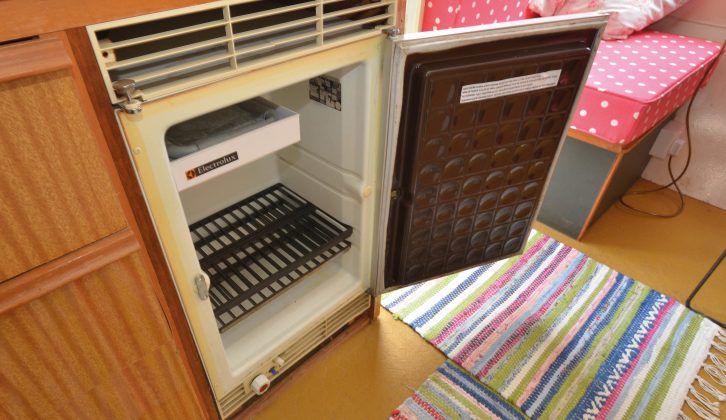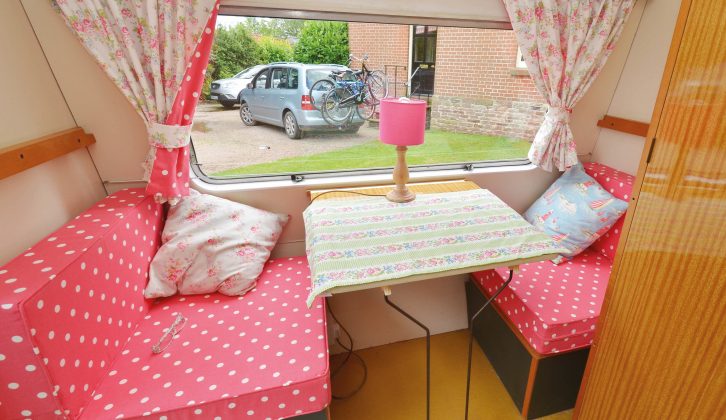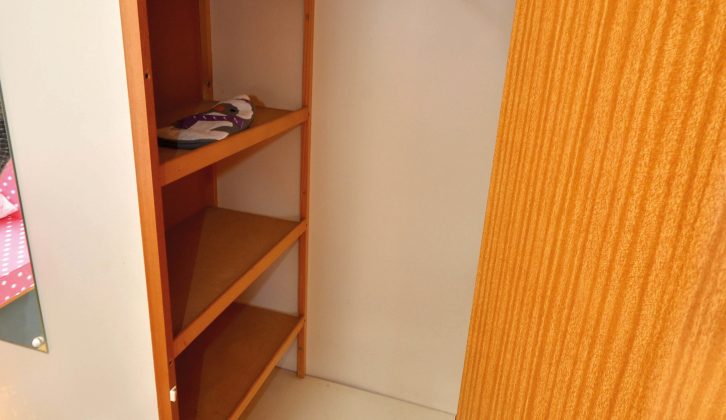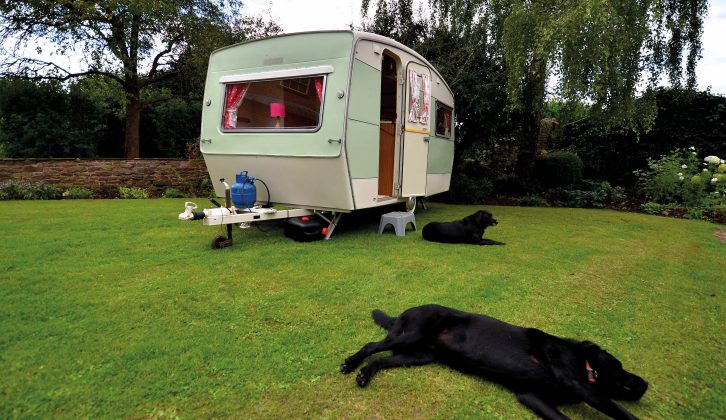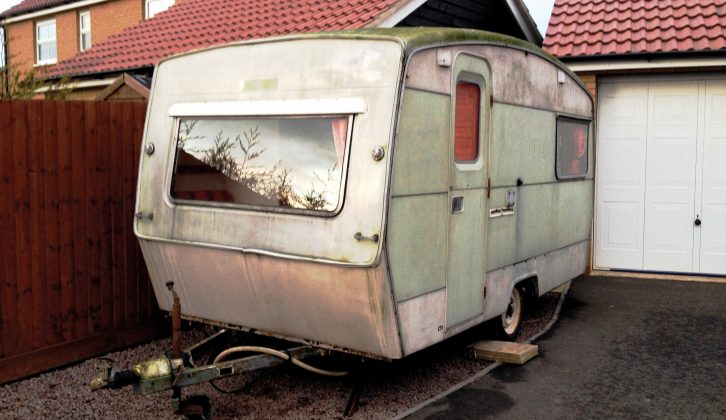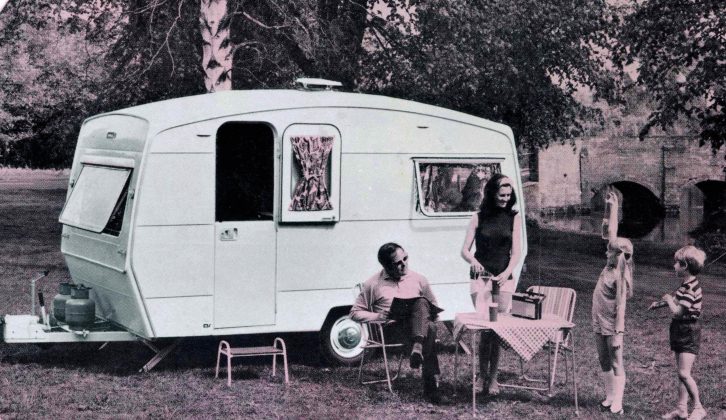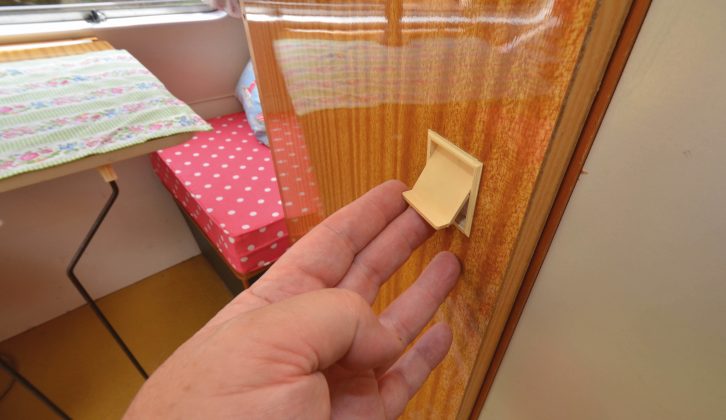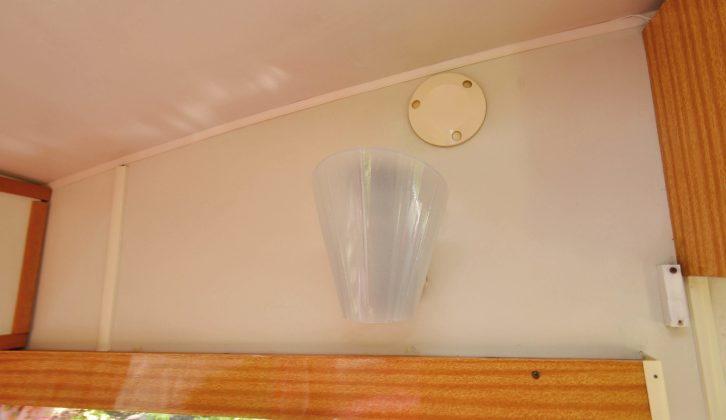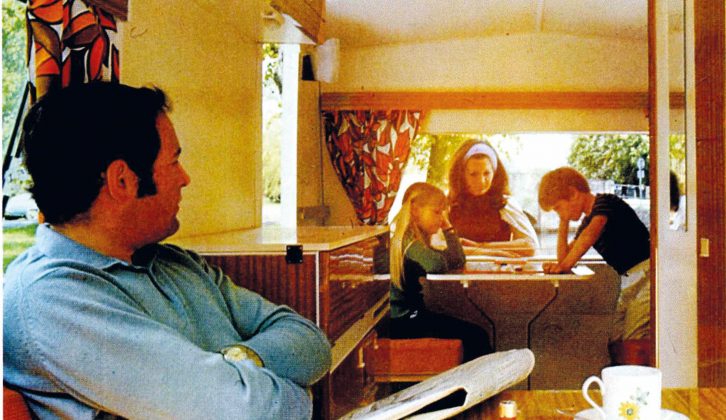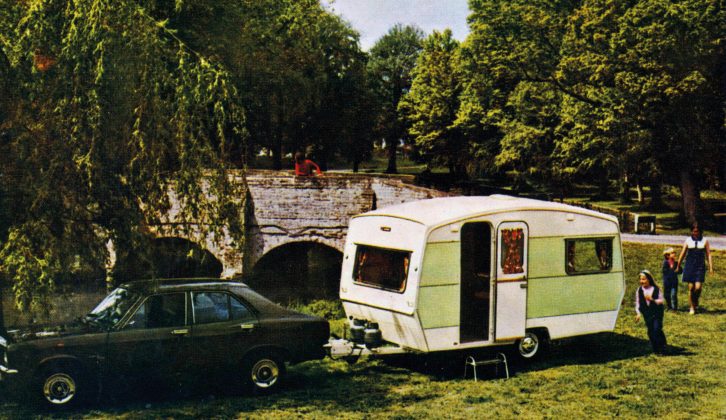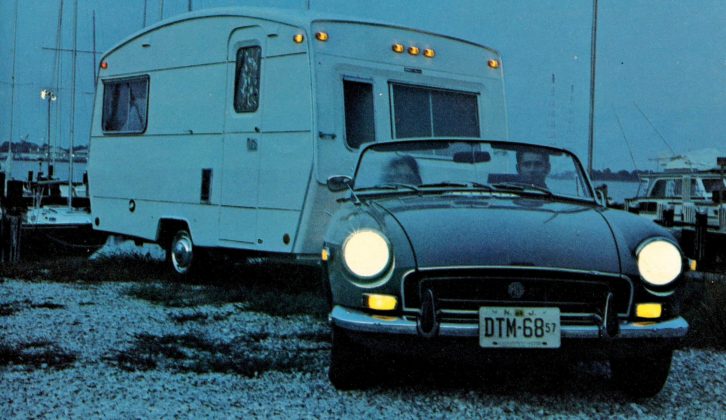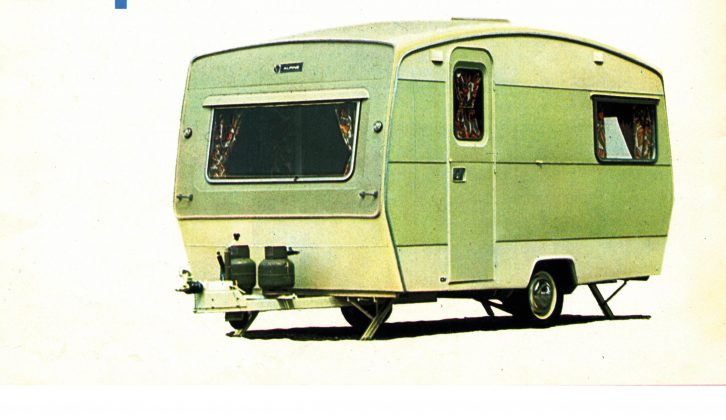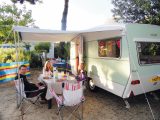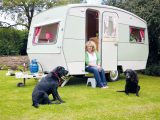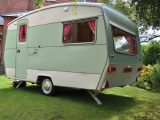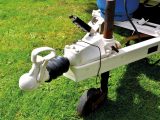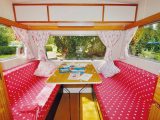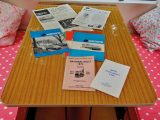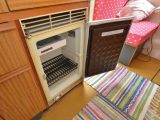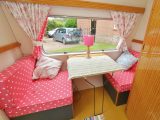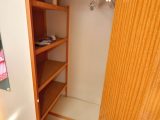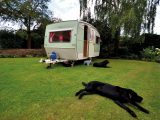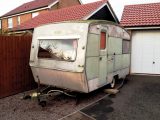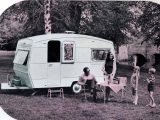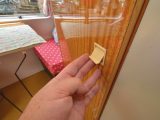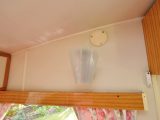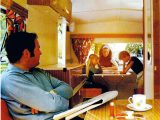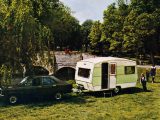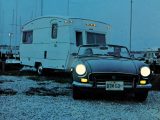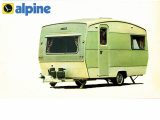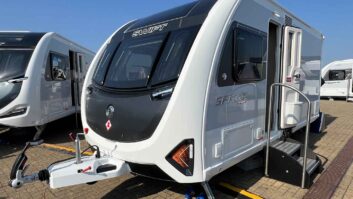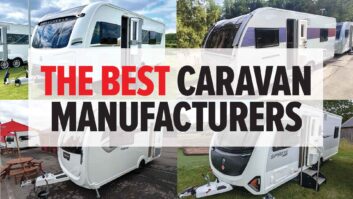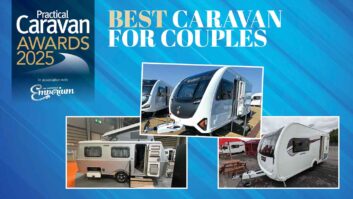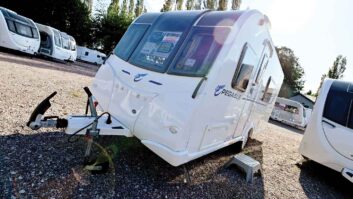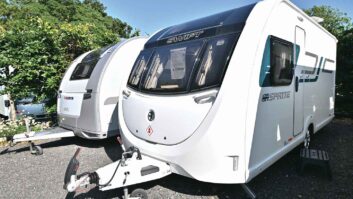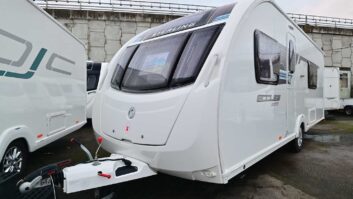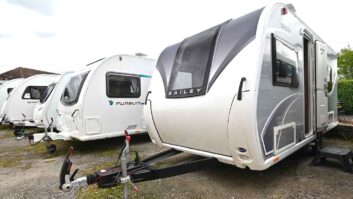A young Andrew Beckett caravanned with his parents in the mid-1960s and their van, like most tourers in the UK back then, was a Sprite. Decades later, when he and his wife, Beverley, were looking to buy a classic van, he fondly remembered his childhood touring holidays. That clinched it: he started searching for an old Sprite.
There were plenty of early-vintage Sprite caravans for sale, because so many were sold when new. What had made it Britain’s best-seller was that it was affordable, dependable and lightweight for easy towing. Years of testing by Sprite founder Sam Alper OBE ensured that.
The Newmarket factory churned out a tourer every six minutes, every working day, to supply the vast dealer network of parent company CI (Caravans International).
By the end of the decade, caravanning had become more popular than ever, propelled by exploding car ownership and cheap fuel, more leisure time and easy financing.
Alpine ascent
Andrew’s heart was set on finding a 1964 Musketeer but, after searching classified ads, he spotted a 1971 Alpine C. It presented some advantages: models from that time had been redesigned for the new decade, with ‘Sleek-line’ profiles and updated interiors.
Moreover, 12ft-long tourers were favoured by families in the 1970s. Dad’s new company car, most likely a Ford Cortina 1.3 Deluxe, could pull a 12ft model at the 40mph towing limit in effect at the time with little trouble.
In late 1970, the Sprite Alpine was the UK’s best-selling tourer, with more than 25,000 built each year – including caravans produced for export.
The four-layout range for the 1971 model year, which was only slightly modified, included the Alpine C. The double dinette van, with central washroom and kitchen, proved very popular.
Before Andrew spotted his dream tourer, he and Beverley had considered buying a classic motorhome – either a Devon or Dormobile Volkswagen Kombi conversion. They decided, however, that a caravan would provide more living space while costing less to buy.
The Alpine C was over in Norfolk, a long way from his home in Hereford. So he had to make sure the van was a sound buy before journeying to see it. The seller told him that the Sprite had been on a seasonal pitch for years and later sat on a drive. Now it was being used as a den in the garden!
After negotiating over the phone, Andrew went to inspect the van and found that it was dry and in basically sound condition. The original flooring showed little wear. The furniture was mostly intact and all the plastic door catches worked. The retrofitted fridge (possibly from the mid-1970s) functioned perfectly.
He hitched it to his Land Rover Freelander and towed it home. As he drove up, Beverley became apprehensive. The Alpine looked to be past it, but she agreed to help Andrew bring it back to life. He manoeuvred it into his workshop and, over a period of months, poured on the TLC. The chassis, which was of CI’s own design and manufacture, was not galvanised, but it still only needed to be rubbed down and repainted.
Aside from a few dents, the sidewalls were in good condition and just needed respraying. The rubber seals in the panel joins were intact. Andrew had to replace the steel plate holding the gas cylinders.
He moved onto the road lights, whose circuits all worked, and replaced the lenses that had faded. Surprisingly, most were still available to buy new!
Fully refreshed
Beverley set about replacing the curtains and upholstery with brightly coloured fabrics, while the originals were stored away. All Andrew had to do inside was replace two kitchen locker doors. After the Sprite had been worked on and given safety checks it was ready to roll.
Upon my arrival, Andrew pulled the Alpine into the afternoon sun from his garage – it is protected by being stored under cover. There in all its glory stood the Sprite Alpine that I remember having seen new at a CI dealership in 1970. The curved roof was considered a design feat then, and tested the Sprite production team to the full until they were accustomed to the manufacturing technique. In fact, early 1970 models were in short supply due to this.
The Alpine’s profile was distinctive but it was still identifiably a Sprite. The glazed stable door and chromed hubcaps bearing the Sprite logo were upmarket features for an entry-level van such as this. On the other hand, the A-frame was basic and original, as were the small jockey wheel and coupling.
Auto-reverse was not an option in 1971; to manoeuvre backwards, a catch behind the coupling’s housing had to be engaged to stop the overrun brakes from coming on. As soon as you drew forward again, the catch released itself, so you had to repeat the procedure!
Room to move
Step inside the Alpine, which is small compared with modern tourers, and you’ll find that it actually feels spacious. The four-seater rear dinette, with parallel bench seats, can be converted into a double bed using the clip-on table to support the central cushions. A 12V strip-light has been retrofitted to complement the single gaslight.
Two can dine comfortably in the front dinette, designed for children to use day and night. It converts into a single bed with a stretcher-style bunk above; the latter is assembled by inserting the ends of its two steel poles into slots in both walls. Another gaslight was fitted above the top bunk. The layout was designed by Reg Dean, who had worked for Sprite and Eccles in the early 1960s. However, he created the floorplan after going to work for another manufacturer in 1967.
The furniture, though basic by today’s standards, boasts a finish classed as ‘modern and durable’. CI had tested it with a burning cigarette end – not the sort of test you’d conduct in 2016! The felt-backed, easy-wipe plastic floor covering has proved to be just as long-lasting.
The Sprite and contemporary tourers had fewer storage options than today’s vans do. What the Alpine does have is two overhead lockers with sliding doors above the rear dinette and a full-height wardrobe on the offside. With its hanging space and wealth of shelf space, it puts the wardrobes in some modern tourers to shame! Adding to its attraction is the pull- out plastic catch – it was innovative back then and still works 40 years on!
In constant use
Amidships, to the rear of the wardrobe, is the washroom, which has just enough floor space for a Porta Potti – and nothing else.
Across the gangway is the nearside kitchen, which is equipped with a twin-burner hob, a gas grill and a plastic sink, which is served by a retrofitted foot pump. The cupboards, which have the same type of catches as the wardrobe, and drawers complete the picture.
In 1971 the Alpine would have been considered a great starter tourer. Andrew and Beverley have owned modern caravans in the past, but this was a fantastic way of reliving touring as it was.
Aside from the van being a piece of caravanning heritage, Andrew and Beverley do not treat it as just a showpiece. They use it when their two daughters attend horse trials and for family holidays in France. So, at 45 years of age, their van continues doing what it was designed for: great caravanning holidays!
At 45 years of age, their van continues doing what it was designed for: great caravanning holidays!
